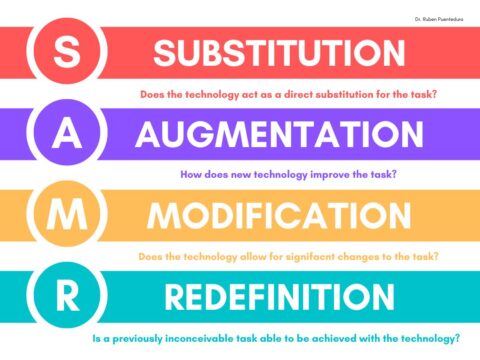 Online learning has become not only a common alternative to physical classes, but a well-regarded change maker in the education ecosystem. Not only does it eliminate the noise of who’s wearing what, disruptive students, and classes cancelled due to snow days, it is becoming the surest and easiest way to treat all students equally. The gregarious students no longer take over the class and the quiet ones are not ignored in their silence. The popular kid gets no more recognition than the wallflower.
Online learning has become not only a common alternative to physical classes, but a well-regarded change maker in the education ecosystem. Not only does it eliminate the noise of who’s wearing what, disruptive students, and classes cancelled due to snow days, it is becoming the surest and easiest way to treat all students equally. The gregarious students no longer take over the class and the quiet ones are not ignored in their silence. The popular kid gets no more recognition than the wallflower.
If you teach online, you know what I mean. The ease with which it differentiates for student needs, focuses on what’s important (which rarely is a due date), and provides much-needed flexibility has changed the way many of us teach our physical classes. See if any of these traits sound familiar:
Model a Good Instructor
Good online instructors are what we always wished teaching would be. Here’s what Bobby Hobgood, online teacher since 1998, says about what he’s learned about teaching through the online modality:
“…the instructional design and instruction of my courses reflect a Community of Inquiry approach whereby engagement is fostered through thoughtful attention given to how I manifest myself throughout the course (teaching presence), how students engage in the content of the course (cognitive presence) and how, together, we interact to form a dynamic learning community (social presence).”
Ignore Innocent Mistakes
We all know the type of “innocent mistakes” students make in class. They use the wrong word or giggle at the wrong time which distracts everyone from the goals of the class. That doesn’t happen in online courses. Since most input is done prior to submittal, students have time to provide measured responses that they’ve edited to say what they want.
Pay Attention to Human Contact
Because online classes can feel impersonal, you as the teacher gain a deeper understanding of the value of collaboration, community, and chatter. State requirements are starting to address this by requiring online virtual meetings between teacher and student. I already do this and find the practice invaluable. After a weekly one-hour session, students feel closer to classmates and often add them to their ongoing PLN (Professional Learning Network).
Simplify Tech Skills
In a traditional class, most teachers do one of two things when using tech in your classes: 1) they help students individually who have difficulty making the lesson’s tech work, or 2) they skip the tech entirely, opting instead to substitute non-online options. Neither of these is a good solution and they certainly aren’t where the education ecosystem is headed. As an online teacher, I address the issue in a different way. First, I select only tech tools that are platform agnostic, easy to set up, and intuitive to use. Then, even with that, I provide options to the preferred tool so if the student’s computer is a decade old or their WiFi is quirky, they can still complete the assignment.
This should be true in your traditional classroom also. If the tech is intimidating, students will avoid it, will not learn the lessons, and will not enjoy your class. The online class tech model — with a requirement for easy setup and intuitive use — lets you and your learners concentrate on the important pieces of the lesson plan.
Provide Flexible Due Dates
Traditional classes have absolute due dates for classwork, homework, and quizzes. If a student has an off day and can’t submit on time, it hurts his/her grade. Online classes usually aren’t like this. In mine, I publish the due dates for all homework, classwork, and quizzes. Students can complete work early if they know they can’t comply with one of the due dates or catch up after falling a little behind without dinging their grade (unless, of course, it’s the final. They do have to be done by the time the class closes). Think about it: Why does it matter? Leigh A. Hall, an online professor with the University of Wyoming since 2012 says:
“Early in my online career, I marched students, expeditiously, from one weekly deadline to the next. That approach, of course, sapped the advantages of being online. It also kept me busy making exceptions for students willing to march me through the details of their lives.”
If your school has an LMS, consider whether you can make the learning and teaching jobs more flexible and differentiated by providing a schedule of all work. Let students work at their own pace, on their own schedule to complete it.
Communicate With Social Media
With 90% of school-age individuals (kids over thirteen and adults) on some form of social media, it has become a natural way to communicate ideas, collaborate on projects, accept class work, and answer questions. They include popular platforms most students know how to use and are eager to incorporate into their learning — maybe already do. Social Media is well-accepted in online classes but not so much in physical classes. The difficulties usually revolve around lack of understanding and worry that students will be distracted from their cerebral endeavors. That’s easy to solve. If social media becomes a problem in your classes, by all means employ traditional communication like email, private discussion boards, and LMS-based forums. Losing access to social media might be all it takes for students to follow the rules.
BTW, because students in online classes are from all over the country — or the world — getting together must be via some sort of virtual meeting platform like the popular Skype and Google Hangouts. In an age where many parents are not available to drive their children to a friend’s house or the library to work collaboratively on schoolwork, these virtual meeting options are quickly being accepted as part of the learning culture.
Ease of Differentiation
Most teachers I know agree that differentiating for unique student needs is a great idea. Personalized learning that addresses the way a student best learns is a goal they all strive for. The problem usually comes in applying that in class. It can mean rolling out multiple lesson plans and helping students individually to fit one to their needs. That’s not what happens in online classes. Teachers share the overarching goals of the lesson (the Big Idea and the Essential Question) and then provide resources to accomplish those, leaving it to the student to select the one that best suits them. Foundational material could be provided as text documents, podcasts, or videos Assessments might ask for evidence of learning via video, audio, a document, or some other approach of the student’s choosing — as long as they meet requirements. This personalizes learning without the voluminous extra time that most teachers associate with it.
***
Now I need your help. If you teach online, how has that experience changed the way you teach in a classroom? Please share in the comments below.
More on Social Media
What Online Teachers Have Learning From Teaching Online
How to be a better online teacher
An Open Letter to Teachers About Online Classes
Jacqui Murray has been teaching K-18 technology for 30 years. She is the editor/author of over a hundred tech ed resources including a K-12 technology curriculum, K-8 keyboard curriculum, K-8 Digital Citizenship curriculum. She is an adjunct professor in tech ed, Master Teacher, webmaster for four blogs, an Amazon Vine Voice, CSTA presentation reviewer, freelance journalist on tech ed topics, contributor to NEA Today, and author of the tech thrillers, To Hunt a Sub and Twenty-four Days. You can find her resources at Structured Learning.




































